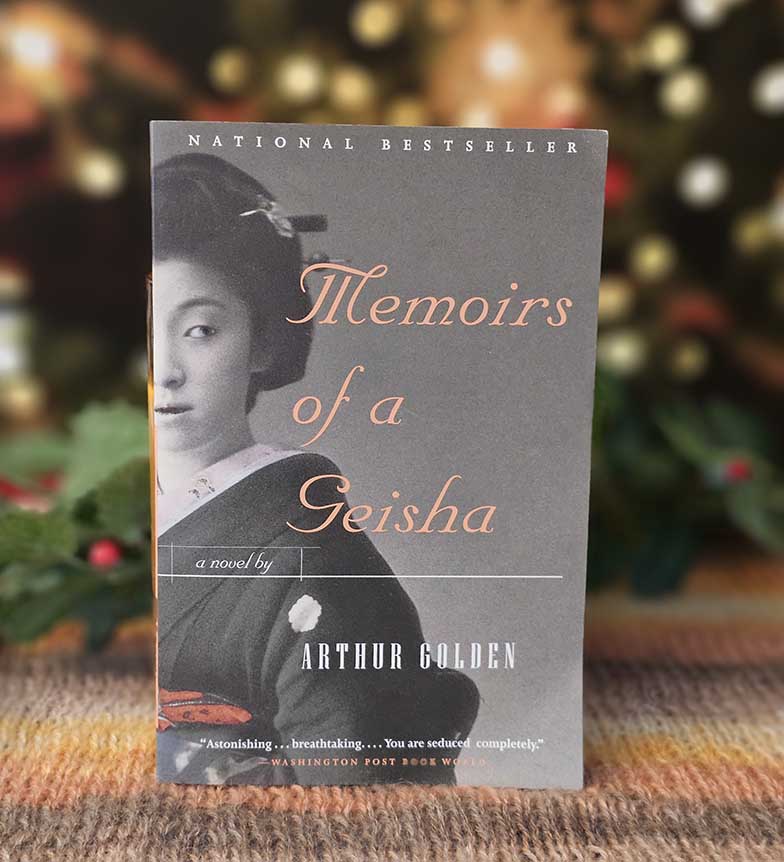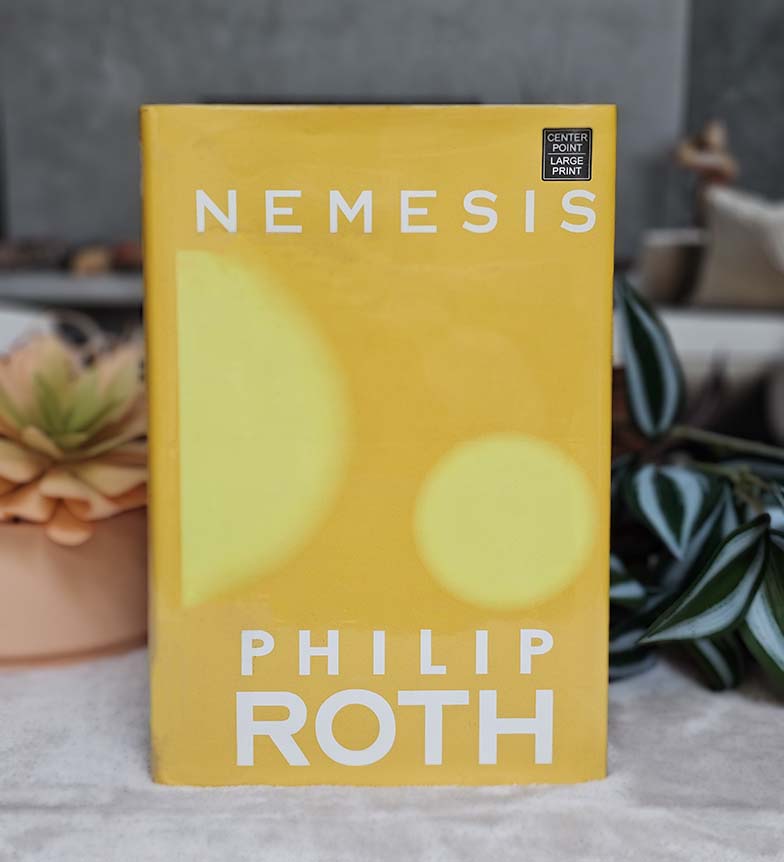
Memoirs of a Geisha
by Arthur Golden
A stunning portrait of a geisha's life in pre-war and wartime Japan. Through the eyes of Sayuri, we witness the beauty, artistry, and complex world of geisha culture.
Spoiler Warning
This review may contain spoilers. Read at your own discretion if you haven't finished the book yet.
Overview
Memoirs of a Geisha is a beautifully written, immersive novel that brings to life the hidden world of geisha culture in 1930s and 1940s Japan. Through the eyes of Sayuri, we witness the artistry, sacrifice, and complex dynamics of a vanishing way of life.
What Makes This Book Extraordinary
Arthur Golden's meticulous research and lyrical prose create a world so vivid you can see the silk kimonos, smell the incense, and feel the tension in every encounter.
This isn't a simple romance or coming-of-age story - it's a nuanced exploration of culture, power, survival, and the choices (or lack of choices) women faced in pre-war Japan.
The Story
From Chiyo to Sayuri
A nine-year-old girl from a poor fishing village is sold to an okiya (geisha house) in Kyoto. Renamed and remade, she must:
- Master the arts of dance, music, and conversation
- Navigate fierce rivalries within the geisha house
- Win the attention of wealthy patrons
- Survive war and occupation
- Find love in a world where it's a luxury she can't afford
The Geisha World
Golden reveals the intricate details of geisha culture:
- The rigorous training from childhood
- The art of the tea ceremony
- The symbolism of kimono colors and patterns
- The elaborate makeup and hairstyles
- The subtle power plays and unspoken rules
- The relationship between geisha, patrons, and rivals
What I Loved
The Prose
Golden's writing is gorgeous - lush, detailed, and evocative without being overwrought. Every scene is painted with careful attention to sensory detail.
The Cultural Detail
The level of research is evident on every page. The customs, traditions, and daily rituals feel authentic and are explained naturally through Sayuri's perspective.
Sayuri's Journey
Watching her transform from terrified child to accomplished geisha is compelling. She's smart, determined, and complex - not a passive victim or a simple heroine.
The Historical Backdrop
The way World War II impacts the geisha districts, forcing everyone to adapt and survive, adds depth and urgency to the personal story.
The Complexity
Nothing is simple in this book. Relationships are complicated, motivations are mixed, and survival requires difficult choices.
Key Themes
The Art of Performance
A geisha's life is a constant performance - creating beauty, mystery, and entertainment while hiding personal feelings and struggles.
Power Through Art
In a male-dominated world, geisha gain influence through perfecting their arts and mastering the subtle dynamics of patron relationships.
The Cost of Beauty
The beauty and refinement of geisha culture comes at enormous personal cost - childhood stolen, choices limited, identity subsumed.
Resilience and Adaptation
Sayuri's ability to adapt and persist through rivalry, war, and heartbreak shows remarkable strength.
Love and Longing
The tension between Sayuri's professional obligations and her personal desires creates the emotional core of the story.
What to Consider
Historical Accuracy Debates
While the novel is well-researched, some have criticized certain portrayals. Remember this is fiction, not documentary.
The Western Perspective
Golden is American, writing about Japanese culture. Some readers feel this limits authenticity, while others appreciate the accessible entry point.
Romanticization Concerns
The book walks a line between showing the beauty of the culture and acknowledging its exploitation of women.
Why 4.5 Stars?
This is a beautifully crafted, immersive novel that brings a hidden world to life with skill and sensitivity. The prose is gorgeous, the characters are complex, and the story is compelling.
I'm holding back half a star because some elements feel slightly romanticized, and the Western perspective occasionally shows. But these are minor issues in an otherwise excellent novel.
Who Should Read This
- Lovers of historical fiction with rich detail
- Readers interested in Japanese culture
- Anyone who appreciates beautiful prose
- Fans of coming-of-age stories with depth
- Those who enjoy stories about women navigating difficult circumstances with grace and determination
Final Thoughts
Memoirs of a Geisha is a stunning achievement - a window into a world most readers will never experience, told with beauty, complexity, and heart.
It's a story about survival, about finding agency in circumstances that offer little, and about the human capacity for resilience and hope. The world Golden creates is so vivid and detailed that you feel transported to 1930s Kyoto.
While it's not perfect - no novel is - it's a powerful, moving, beautifully written story that stays with you long after the last page.
If you want to be completely immersed in another time and place, to see a hidden world brought to life, this book delivers magnificently. ⭐⭐⭐⭐½
My Notes & Takeaways
A Window Into a Hidden World
Memoirs of a Geisha transports readers into the secretive, beautiful, and complex world of geisha culture in 1930s-1940s Japan.
The Story
Chiyo, a young girl from a fishing village, is sold to a geisha house in Kyoto. Renamed Sayuri, she must navigate rivalry, tradition, war, and her own heart to survive and succeed in this demanding world.
The Artistry
Golden's prose is lush and evocative, painting vivid pictures of:
- The intricate kimonos and elaborate hairstyles
- The tea houses and their refined rituals
- The training in dance, music, and conversation
- The subtle power dynamics and unspoken rules
What Makes It Powerful
Cultural Immersion: The level of detail about geisha culture, from the makeup application to the significance of each gesture, creates complete immersion.
Coming of Age: Sayuri's journey from frightened child to accomplished geisha is compelling and often heartbreaking.
Historical Context: The backdrop of pre-war and wartime Japan adds depth and urgency to the personal story.
Complex Characters: No one is simply good or evil - even rivals have understandable motivations.
Key Themes
Survival and Adaptation: Sayuri must constantly adapt to survive in a world where she has little control.
The Nature of Power: In a world dominated by men, geisha find power through art, intelligence, and subtle influence.
Beauty and Sacrifice: The beauty of geisha culture comes at enormous personal cost.
Love vs. Duty: The tension between personal desires and professional obligations.
Transformation: From Chiyo to Sayuri - the creation of a geisha identity.
The Complexity
The book doesn't romanticize geisha life. It shows:
- The harsh training and competition
- The exploitation of young girls
- The limited choices women faced
- The cost of beauty and perfection
- The complexity of patron relationships
Historical Elements
Pre-War Kyoto: The height of geisha culture, when tea houses thrived and tradition was preserved.
World War II: How the war changed everything - the closure of tea houses, the scarcity, the fear.
Post-War Japan: The occupation and the uncertain future of traditional culture.
Why It Resonates
This is a story about resilience, about finding beauty and meaning in difficult circumstances, and about the price women pay for survival in a world that gives them few options.
Sayuri's determination to shape her own fate within severe constraints is both inspiring and heartbreaking.
You Might Also Like

Nemesis
by Philip Roth

A Gate at the Stairs
by Lorrie Moore
A coming-of-age story set in the Midwest after 9/11. Tassie Keltjin takes a job as a nanny and finds herself drawn into a complex family dynamic that challenges her understanding of race, identity, and belonging.

The Second Summer of the Sisterhood
by Ann Brashares
The pants are back for a second summer as Carmen, Tibby, Bridget, and Lena face new challenges, deeper heartbreak, and the continued magic of their unbreakable friendship.